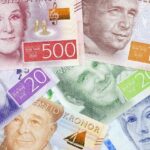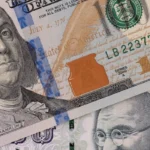Gold edged up for a second session on Friday, supported by political uncertainty in Europe and weaker US data, but nevertheless headed for a third weekly decline amid worries of a US rate hike. Copper rose to the highest in a month amid better-than-expected European growth data.
Comex gold for delivery in April was up 0.50% at $1 226.8 per troy ounce at 09:58 GMT, shifting in a daily range of $1 230.9 – $1 222.5. The precious metal edged up 0.09% on Thursday to $1 220.7.
Support was drawn as European government officials failed to renegotiate the terms of Greece’s bailout deal. Led by Alexis Tsipras, the newly elected Syriza party has promised to significantly reduce the country’s debt while also lifting austerity measures imposed by the previous administration.
Greek Finance Minister Yanis Varoufakis met with his European counterparts in Brussels on Thursday but negotiations failed to end with an agreement, potentially leaving the country without funding. Greece’s current bailout deal is set to expire at the end of this month, after Europe agreed to extend the contract by two months in December.
Another meeting has been scheduled on Friday when Greek officials are to hold talks with representatives of the European Central Bank, the International Monetary Fund and the European Commission.
The meeting is aimed at finding “common ground between the current program and the Greek government’s plans” Eurogroup President Jeroen Dijsselbloem wrote on his Twitter account.
A possible agreement with creditors would significantly reduce the possibility of Greece leaving the Eurozone. However, an euro-area exit and return to the drachma may cause volatility in European markets to skyrocket.
“Support for gold was well pronounced around the 100-day moving average of $1,216 and this level should hold over the short term as we await Monday’s renewed Greek debt negotiations,” said MKS Group trader Sam Laughlin, cited by CNBC.
Meanwhile, weak US retail sales and jobless claims pressured to dollar, lending some support for the metal. However, investors are still worried that the Federal Reserve will increase interest rate in June, despite lower economic data figures, keeping a gauge of the greenback near its highest in ten years.
The US dollar index for settlement in March was down 0.09% at 94.115 at 09:58 GMT, holding in a daily range of 94.350-93.975. The US currency gauge fell 0.94% on Thursday to 94.198. A weaker greenback makes dollar-denominated commodities cheaper for holders of foreign currencies and boosts their appeal as an alternative investment.
Assets in the SPDR Gold Trust, the biggest bullion-backed ETF, fell 1.8 tons on Thursday to 771.51 tons. Changes in holdings typically move gold prices in the same direction.
Physical demand in China remained strong ahead of the Lunar New Year, with gold trading in Shanghai $3-$4 an ounce higher than the global benchmark on Friday.
Copper
Comex copper for delivery in March rose 0.27% to $2.6090 per pound by 9:56 GMT, having earlier touched a one-month high of $2.6420. The contract is up ~1% so far this week after it jumped 3.7% the preceding five-day period.
The industrial metal soared 2.4% on Thursday amid optimism for a diplomatic end to clashes between government forces and pro-Russian separatists in eastern Ukraine. Worse-than-expected retail sales that sent the dollar falling also proved to be supportive.
Tim Evans, chief market strategist at Long Leaf Trading Group Inc. in Chicago, said for Bloomberg: “War is never good for economic activity anywhere, and the fear in Europe of a financial impact of that Greece bailout deal falling apart would have significant economic fallout in Europe and the rest of the world. The market is feeling that’s not going to be a problem, and the outlook for metals improves.”
The metal also drew support on Friday after preliminary data showed that the German economy expanded by an annualized 1.6% in the fourth quarter, compared to projections for a slowdown to 1.0% from 1.2% in the three months through September. GDP growth in the Eurozone also beat estimates as the economy of the single-currency bloc expanded at the annual rate of 0.9% in the fourth quarter, 0.1% above projections.
Physical demand in China has been weak ahead of the Lunar New Year Holiday on February 19-20th, but traders were reluctant to short the red metal due to the possibility of an interest rate cut by the Peoples Bank of China, given the recent long series of downbeat economic data.
The market also drew support after BHP Billiton said that a mill outage at its Olympic Dam operations in South Australia will slash output by 60 000 – 70 000 tons this financial year, which would reduce an expected global supply surplus of about 220 000 tons by almost a third.





